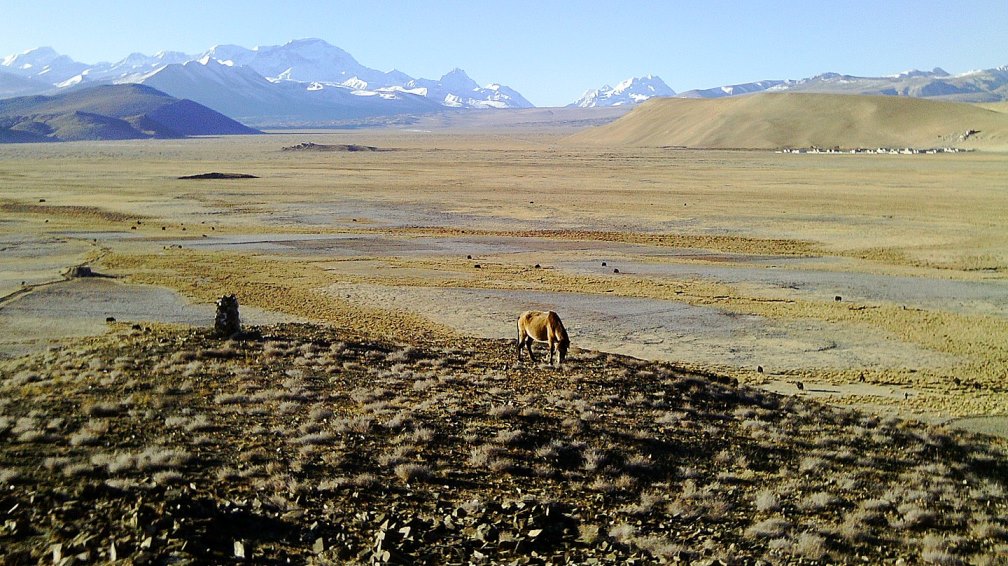The Qinghai‐Tibet Plateau is called the “Roof of the World”. Besides livestock production, this high plateau also provides a variety of other ecosystem services, including fiber production, carbon sequestration, maintenance of the biodiversity (conservation), and recreation.
Alpine grasslands in the Qinghai Tibet Plateau have however been regionally degrading. In the 1990s, the degraded grassland area was estimated to be approximately 4.0 × 107 to 6.0 × 107 ha, about 33% of the total grassland on the Qinghai‐Tibet Plateau.
From 1981 to 2004 in Northern Tibet, some areas of the high plateau experienced particularly high levels of degradation, which resulted in degraded alpine grasslands accounted for 50.8% of the total grassland area, and severely to extremely severely degraded grasslands accounted for 9.7% of this area.
Tibetan grassland degradation had occurred in the forms of losses in plant species richness (i.e., species diversity), increase in native unpalatable and poisonous plants, and decline in livestock productivity, accelerated soil erosion, and shrub invasion.
ABSTRACT:
In an attempt to alleviate the problem of grassland degradation on the Qinghai‐Tibet Plateau in China, state and local authorities in 2003, initiated the “Retire Livestock and Restore Pastures” ecological engineering program, requiring the use of enclosure fencing to enable grazing exclusion and rotational grazing.
A five‐year controlled grazing experiment was conducted to determine the effects of this program on (1) sheep live weight gain; and (2a) standing herbage biomass; and (2b) species diversity. Effects of temporal within‐year variation in precipitation and temperature on livestock productivity, standing herbage biomass, and species diversity were also investigated.
At the end of 5 yr, grazing exclusion showed no significant difference in standing herbage biomass or in species diversity, compared with either continuous grazing or rotational grazing. Rotational grazing at the high stocking rate significantly promoted sheep live weight gain per hectare, but not per sheep; neither standing herbage biomass, nor species diversity, whether under continuous (i.e., traditional) or rotational grazing, showed a significant difference.
Under rotational grazing, higher standing herbage biomass and species diversity were required to maintain or increase sheep liveweight, compared with continuous grazing. Temporal distribution of precipitation and temperature had more influence on alpine grassland parameters, than did grazing.
Results of this study suggest that herders’ local traditional knowledge and expertise might be useful in modifying Government guidelines to fine tune grazing management with the dynamics of the alpine meadow ecosystem, and that it is important to consider equilibrium and non‐equilibrium theory in formulating a policy which benefits both herders and grassland.
Traditional continuous grazing at a carefully chosen light stocking rate appears to be the most appropriate way to manage livestock and grassland in this region.
Photo of typical landscape in the Qinghai‐Tibet Plateau is by StateStreet via Wikipedia.

